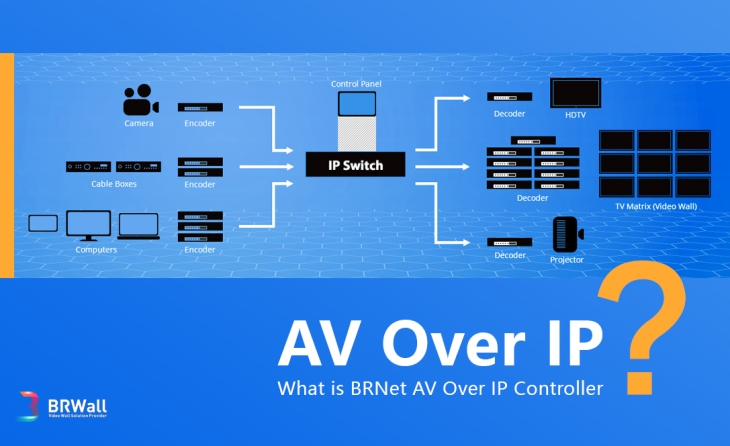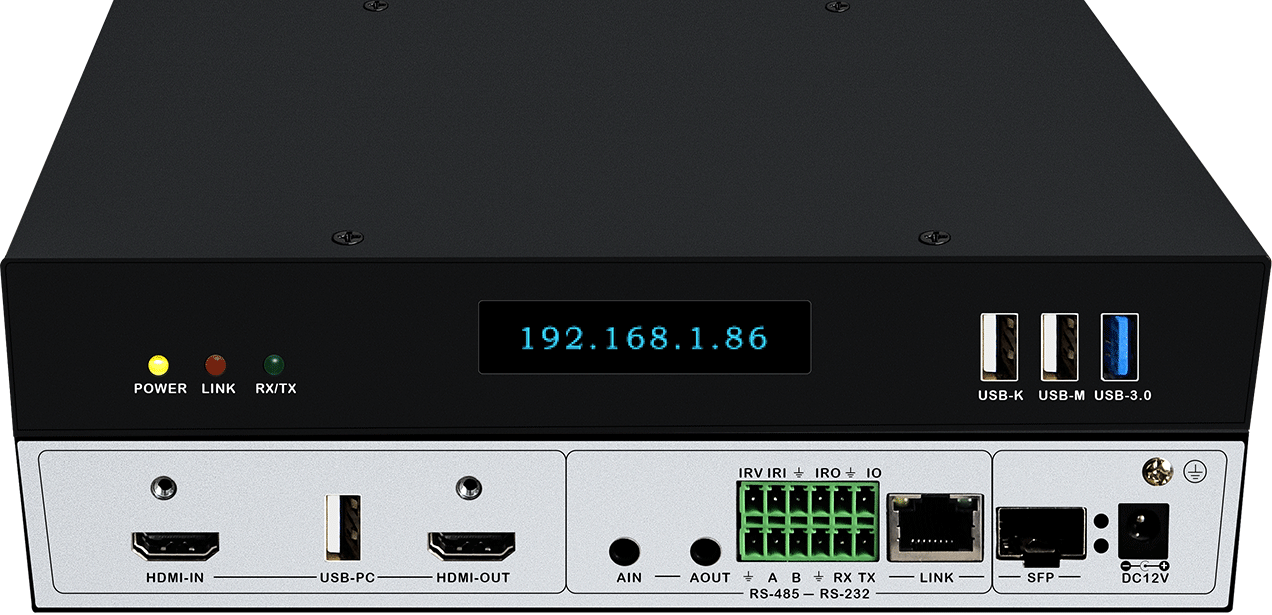What is BRNet AV Over IP Controller?

With the development of modern information networking and higher and higher requirements for audio and video control systems, distributed control systems have gradually come to the forefront of the video wall market. Because of its unlimited bandwidth, decentralized architecture, networking, modularization, high stability, high scalability, etc., which makes it more adaptable to the continuous changes of this era, so it can be applied in multiple fields with more advantage.
BRNet controller uses the IP network as the signal transmission channel, and adopts real-time image processing technology, compresses and encodes various video signal sources (RGB signal, video signal, high-definition video, audio signal, and packs the data into IP stream transmitted on Ethernet, display terminal). Receiving various signal streams and decoding them in real time, and restoring IP stream signals to video signals for display terminal.

BRNet controller uses the IP network as the signal transmission channel, and adopts real-time image processing technology, compresses and encodes various video signal sources (RGB signal, video signal, high-definition video, audio signal, and packs the data into IP stream transmitted on Ethernet, display terminal). Receiving various signal streams and decoding them in real time, and restoring IP stream signals to video signals for display terminal.

BRNet AV over IP controller usually consists of the following parts:
(1) The signal source input node processor can encode various video signals (RGB signals, video signals, high-definition signals, audio signals, etc.) into IP streams that can be transmitted on Ethernet in real time;
(2) Display output node processor, which can receive various signal source IP streams, and decode and display in real time;
(3) BRNet KVM Node Processor integrates the remote KVM function. The operator can take over any host connected to the KVM function of the BRNet distributed media management and control platform through a set of keyboard and mouse at the workstation, enabling one person to control multiple machines, video push and more functions etc.
(4) Control and management software, through which the user can control each processor in real time, and easily achieve video sharing and strengthening mutual cooperation.
(5) The Ethernet switch forwards the IP code stream of the signal to the display processor according to the IP address.
(2) Display output node processor, which can receive various signal source IP streams, and decode and display in real time;
(3) BRNet KVM Node Processor integrates the remote KVM function. The operator can take over any host connected to the KVM function of the BRNet distributed media management and control platform through a set of keyboard and mouse at the workstation, enabling one person to control multiple machines, video push and more functions etc.
(4) Control and management software, through which the user can control each processor in real time, and easily achieve video sharing and strengthening mutual cooperation.
(5) The Ethernet switch forwards the IP code stream of the signal to the display processor according to the IP address.

Application Environment of BRNet Controller
The high stability and distributed architecture of the BRNet controller system is more suitable for the 7 x 24 hours working environment of some large government and military industries, greatly reducing and dispersing the potential risks of the traditional centralized control system. At the same time, the AV over IP decentralized architecture makes it easier to wire at project site, to manage multiple groups of video wall systems in a unified or partitioned manner, which can easily expand the original large-screen system.





